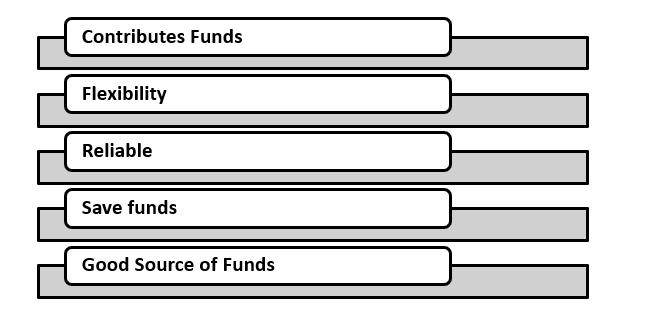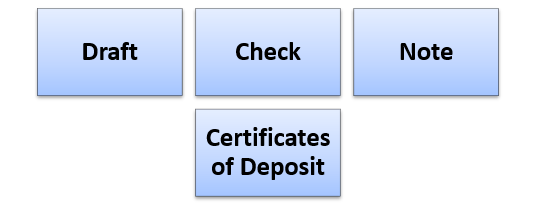What is Commercial Paper ?
Commercial paper refers to a short-term, unsecure financial debt instrument of money market, issued by the companies for raising the funds for meeting the needs of short-term inventories and liabilities. The commercial paper is kind of promissory note issued at a large amount with a maturity period range of 7 days to 270 days. However, the maturity date can’t exceed the date up to which the credit rating of the issued is valid.
Commercial Paper reflects prevailing market interest rates and is generally issued in discount and matures at face value. These instruments usually carry high interest rates than bonds and pays fixed interest rate to the holder.

© 2022 Kalkine Media®
Image description: Commercial Paper reflects prevailing market interest rates
Companies with high ratings agencies often use Commercial paper to diversify their sources of short-term borrowings, as these instruments are not backed by collateral other than the issuer’s promise to repay the face value at the maturity date mentioned on the note. Further, throughout the duration of debts the issuer required to maintain the pre-specified interest payments.
Summary
- Commercial paper refers to a financial instrument of money market, issued by the companies for raising the funds for meeting the needs of short term inventories and liabilities.
- Companies issue commercial papers at discount depending on the current interest rates and the goodwill of the issuer.
- Commercial paper is a short term money market instrument mostly issued by big companies in order to meet their short term financial obligations.
© 2022 Kalkine Media®
Understanding Commercial Paper
Commercial paper is a short-term money market instrument mostly issued by high-rated companies in order to meet their short-term liabilities including inventories and accounts payable. It was first introduced over 150 years ago when merchants in New York started selling their short-term obligations to dealers to free up capital to cover short-term obligations. Companies issue commercial papers at discount depending on the current interest rates and the goodwill of the issuer. Commercial paper may define as the secured commercial papers and unsecured commercial papers based on the security. Unsecured commercial papers refer to the traditional papers which are issued without any security and secured commercial papers assured by other financial assets, called as Asset-Backed Commercial Papers (ABCP).
The commercial paper came into picture about 100 years back. Marcus Goldman was the first dealer to deal in the instrument (commercial paper) and became the biggest dealer in the commercial paper after the end of the Civil War. The commercial paper set off as one of the most popular debt instruments of money market.
Frequently Asked Questions (FAQs)
What are the features of Commercial Paper?
There are several features of money market include the following:
- Commercial paper is in a form of promissory note.
- Commercial paper is an unsecured debt instrument that works as an evidence certificate.
- Commercial paper is issued by companies at discount from the face value with a fixed rate of interest.
- Commercial paper can be issued directly by a company or through dealer banks and banks.
- A company can directly issue the paper to investors, or it can be done through banks/dealer banks.
- Commercial paper, generally issued by big corporations in order to meet their short-term financial requirement such as maintain9ing inventories, working capital, new project etc.
- Commercial paper generally issued in a set of US$100,000 because of that it is not in the reach of retail investors.
- The investor will receive interest and principal amount at the time of maturity.
- Commercial paper is issued with the range of maturity from 7 days to 270 days.
- Commercial paper is rated like corporate bonds by rating agencies including Moody’s, Standard &Poor’s.
Advantages of Commercial Paper
Advantages of commercial paper include the following:

© 2022 Kalkine Media®
- Contributes Funds: Commercial paper is a good option for more funding at low interest rate as the issuing company put extra funds in the cost of commercial paper that makes it cheaper in the comparison of other sources, such as bank loans and the loans from the financial institutions.
- Flexibility: Commercial paper is highly liquid and issued with a flexible maturity range from seven days to 270 days.
- Reliable: Commercial paper is highly reliable as it is issued by big corporations with high credit ratings and does not have any restrictions and limiting condition.
- Save funds: Companies can earn a good amount of return on commercial paper by keeping liquidity of the invested sum.
- Good Source of Funds: Commercial paper is one of the good sources of funds as the company customized the range of its maturity as per the financial obligations. A company also has an option to repay the commercial paper by issuing new commercial papers in the market.
Types of Commercial Paper
According to the Uniform Commercial Code (UCC), commercial papers are divided in the four types given below:

© 2022 Kalkine Media®
- Draft:
Draft refers to the written instructions issued by the drawer to the drawee and to pay a certain amount to third party. Drawer is the person who gives the order to pay. Drawee is the person who receives the order to pay from drawer for instance cashier’s check. It is commonly use in the payments and the transaction of shipping of goods overseas. A buyer uses draft to make sure the accuracy of products before the payment goes for the seller.
- Check
Check is a form of commercial paper where a bank is the drawee. A check can be drawn only in an associated bank. A check is payable to the holder or on demand to specified person. A bank is in the obligation for paying against cheques since the issuer of the check has money in their bank account.
- Note
Note is also a form of commercial paper. A person or a bank who has the possession of note is called as payee. A payee can be a specific person or anyone one who has the possession, and it is payable on a particular given date by the issuer.
- Certificates of Deposit
Certificate of deposit is a form of commercial paper where receipt of deposit is confirmed by a bank. It is mainly issued by the bank where a bank acquired a certain amount from the depositor for a specific time period and a bank repays the principal amount along with interest after the maturity.
 Please wait processing your request...
Please wait processing your request...